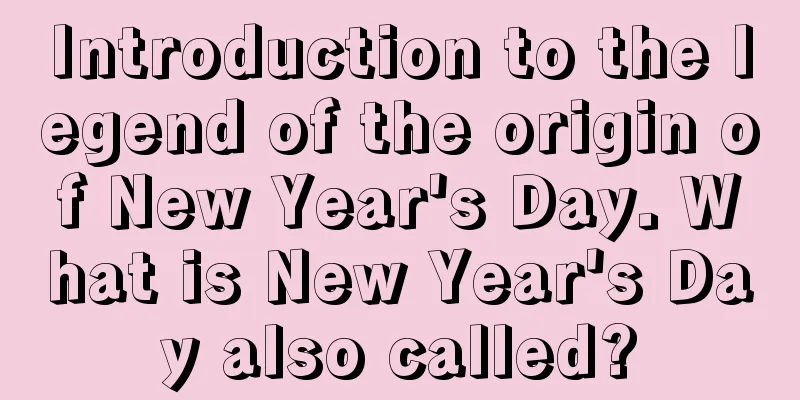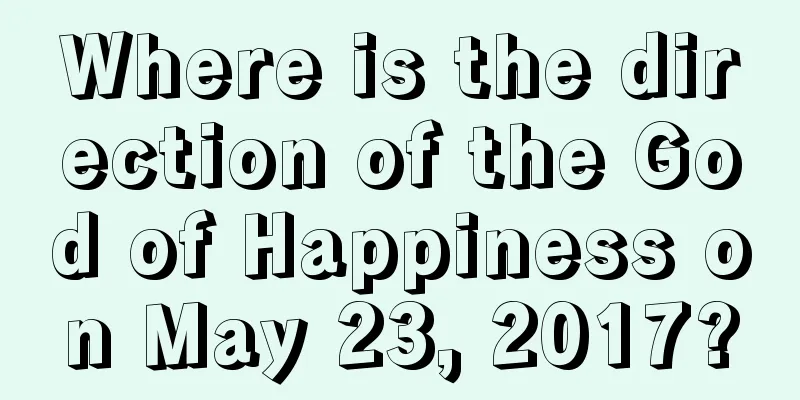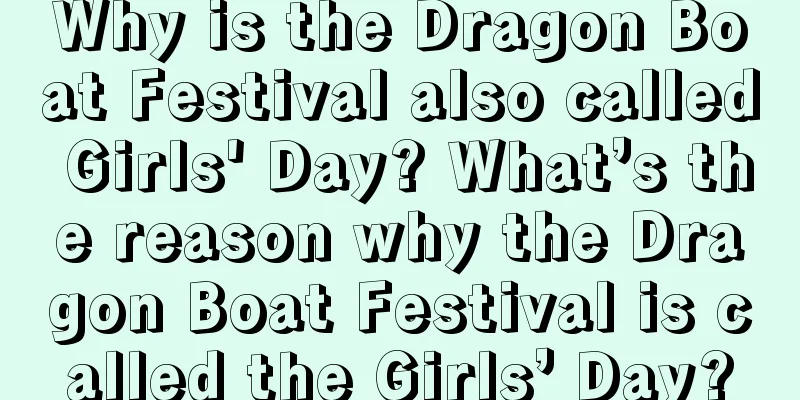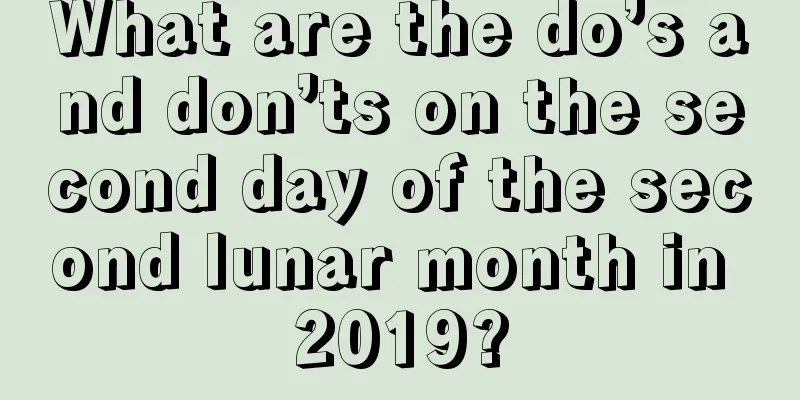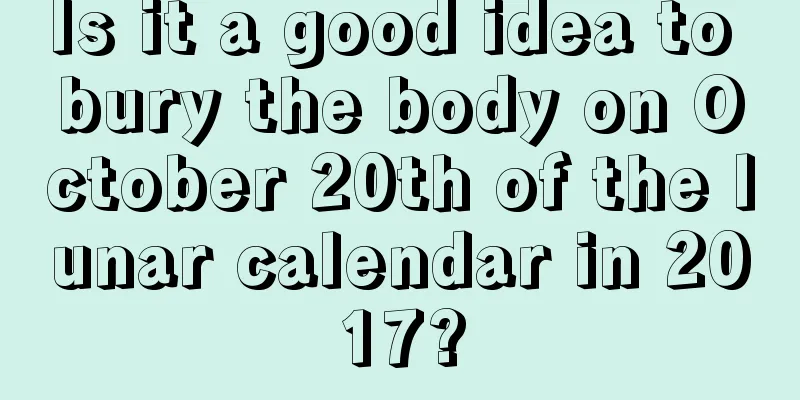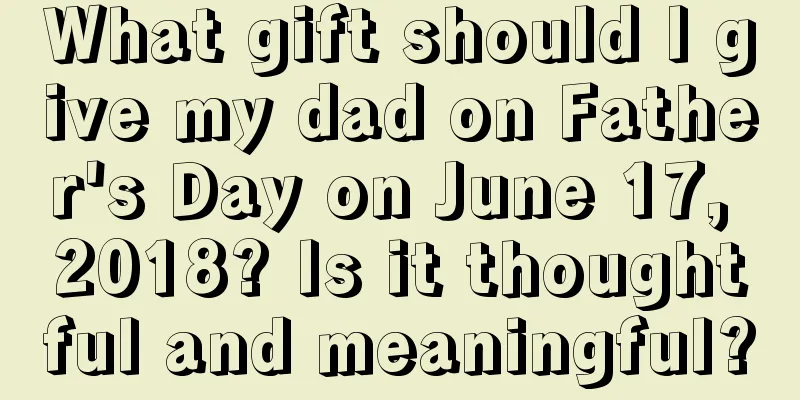What are the origins of the Minor Cold solar term? Introduction to the legend of the Minor Cold solar term
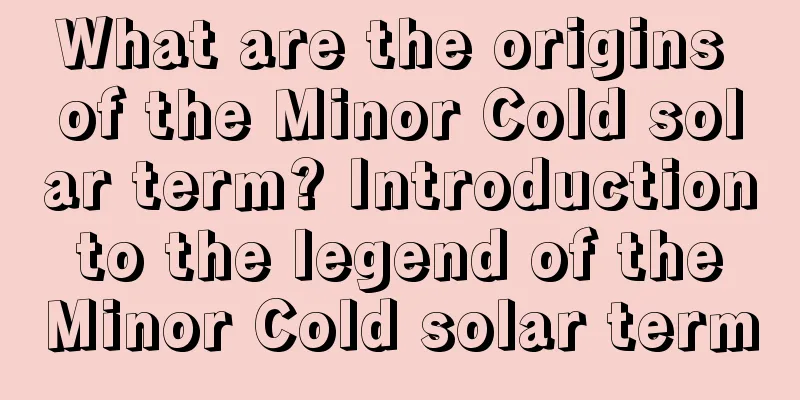
The Minor Cold is the second to last solar term among the 24 solar terms. So what are the origins of the Minor Cold? Introduction to the legend of the Minor Cold solar term. Let’s take a look at the following content!What are the origins of the Minor Cold solar term?Lesser Cold, like Greater Cold, Lesser Heat, Greater Heat and End of Heat, is a solar term that indicates changes in temperature. It is said in the Collection of Explanations of the 72 Seasonal Changes in the Lunar Calendar that "the cold is still mild at the beginning of the month...and severe in the middle of the month." This means that in the Yellow River Basin, the severe cold was colder than the minor cold at that time. And because Minor Cold is in the last few days of "Erjiu", it enters "Sanjiu" a few days after Minor Cold, and the Minor Cold in winter corresponds to the Minor Heat in summer, so it is called Minor Cold. The Great Cold, which comes after the Lesser Cold, is also very cold during the "four nine days of cold" when "sleeping is like sleeping outside", and the Great Cold in winter corresponds to the Great Heat in summer, so it is called the Great Cold.The characteristic of Minor Cold is that the weather is gradually getting colder, but it is not yet extremely cold. The "Three Nines" of midwinter are basically within this solar term, so there is a saying that "Minor Cold is better than Major Cold". This is because during the previous winter solstice, the ground surface receives the least sunlight and heat, but there is still heat supplement from deep in the soil, so it is not the coldest time of the year. After the winter solstice, which is around the "Three Nines", the heat deep in the soil is also consumed. Although the amount of sunlight and heat increases slightly, it is still not enough, so the lowest temperature of the year appears. Introduction to the legend of the Minor Cold solar termLegend 1:In the Tang Dynasty city of Chang'an, the Lesser Cold season was often close to the La Festival. Due to the colder weather, giving gifts to each other is popular in society. Emperors of the Tang Dynasty also had the custom of bestowing lip balm and wax grease in green ivory buckets. On the twelfth day of the third year of Jinglong reign of Emperor Zhongzong of Tang Dynasty, Emperor Zhongzong summoned his close ministers to the imperial garden and gave them twelfth-century fat. In the evening, he brought them into the inner hall from the north gate and gave them food, and also gave them lip balm. Du Fu has a poem that says: "Lip balm and facial cream come with the grace of the emperor, and the emerald tubes and silver pots descend to the sky." Wang Jian's "Palace Poems": "The moon is cold and the sky is chilly as the twelfth month arrives. Snow is dripping on the jade streets and golden tiles. I copy my name outside the door of the bathhouse (palace name) and enter. The princess's family thanks me for the lip balm." Lip balm refers to lipstick. Surface medicine is the medicine added to the wax to prevent cracking. Therefore, lip balm and facial medicine are used to apply on the face to prevent the lips from cracking in the cold winter. Even now, these are still our winter essentials. Legend 2: In terms of phenology, our ancestors proposed the famous "Twenty-four Flower Signals" theory based on long-term understanding and grasp. That is, there are eight solar terms from Xiaohan to Guyu, with a total of 120 days, and each five days is a season, corresponding to a kind of flower signal (flowers that bloom), for a total of 24 seasons, corresponding to 24 kinds of flower signals. The flower-sign wind refers to the wind that comes in response to the signs of flowers. There are three kinds of flower signs during the Minor Cold solar term. The first is plum blossom, the second is camellia, and the third is narcissus. These three flowers bloom one after another during the Minor Cold solar term. In the order of solar terms, the flower signs of the other seven solar terms are: the flower signs of Dahan are first Daphne odora, second orchid, and third Alum; the flower signs of Lichun are first Jasmine, second cherry, and third Spring; the flower signs of Yu Shui are first cauliflower, second apricot blossom, and third plum blossom; the flower signs of Jingzhe are first peach blossom, second crabapple, and third rose; the flower signs of Vernal Equinox are first crabapple, second pear blossom, and third magnolia; the flower signs of Qingming are first tung blossom, second wheat blossom, and third willow blossom; the flower signs of Guyu are first peony, second sweet apple, and third neem blossom. |
<<: When is the Minor Cold solar term? What does the Minor Cold solar term represent?
Recommend
Do people born on the Lantern Festival in the Year of the Sheep have good fortune? Do they have good luck?
The Lantern Festival is also known as the Shangyua...
What is the fate of a girl born on the seventh day of the fourth lunar month in 2018?
Introduction: The good or bad fortune is related t...
Is the time for burning paper during the Cold Clothes Festival in 2019 during the day or at night? When is the best time to burn paper?
Many people think that it is best to burn paper at...
Is April 24th, 2020, a leap day suitable for praying and burning incense?
Is April 24th, 2020, a leap day suitable for prayi...
Is the Rain Water solar term on the 19th day of the first lunar month in 2022 an auspicious day for opening a business?
The first month of the lunar calendar has arrived....
What about the twelfth day of the eighth lunar month in 2020? Is it an auspicious day to open a new store?
Each season has three months: Meng, Zhong and Ji,...
Where is the auspicious position of the God of Wealth on the 17th day of the first lunar month in 2017?
Introduction: People work diligently and conscient...
What are the do's and don'ts on the fifth day of the twelfth lunar month in 2018?
Shui Mo Xiansheng website has carefully compiled ...
When is the Frost Descent solar term in 2017? Where is the auspicious position of the God of Happiness during the Frost Descent?
Introduction: In our folk legends, the God of Joy ...
Analysis of the fate of girls born on July 18th of the lunar calendar in 2019!
What is the fate of a girl born on the 18th day of...
Query—the position of the God of Auspiciousness on February 28, 2020!
According to the direction of the God of Happines...
Is it okay to move and set up the bed the day before the first snow on October 25, 2019? What time will the first snow be in 2019?
Introduction: The Xiaoxue solar term also has good...
Is there a holiday on Christmas? What should you pay attention to when eating on Christmas?
Introduction: Although Christmas is a foreign holi...
Is it suitable to get a haircut on April 15th of the lunar calendar in 2019? Is it a good day to get a haircut?
Is it suitable to get a haircut on the 15th day of...
How to post on WeChat Moments during the Mid-Autumn Festival in 2021? How to say Mid-Autumn Festival greetings?
Mid-Autumn Festival is approaching, do you want to...
